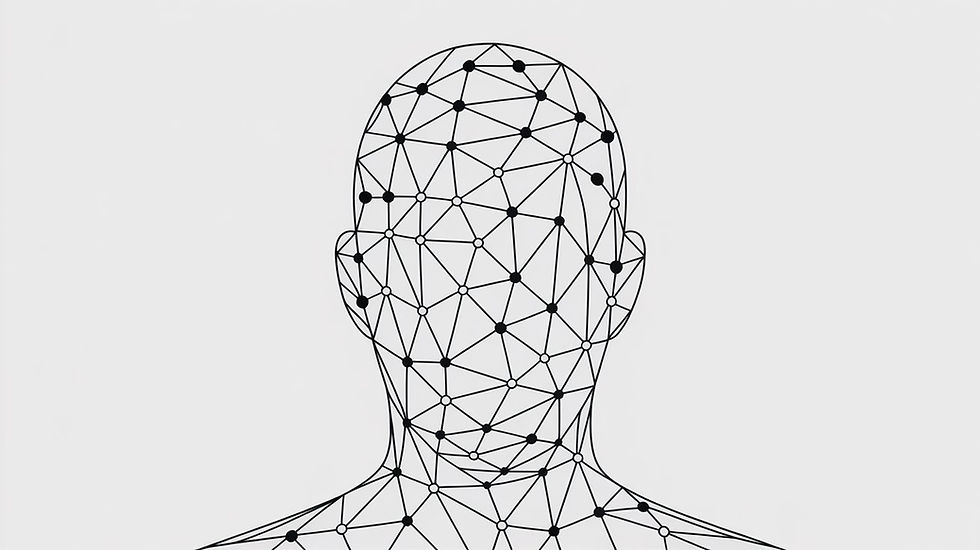Another Crazy Day in AI: Who Owns Machine-Made Masterpieces?
- Wowza Team

- Aug 26
- 4 min read

Hello, AI Enthusiasts.
A recent 11-minute podcast digs into a live case that could reshape how we think about authorship and ownership in the age of generative tools. The debate is no longer just theoretical. Lawmakers and courts are beginning to test whether old copyright frameworks can handle creations that mix human direction with machine output.
Meanwhile, YouTube has been quietly “improving” Shorts with AI. It sharpens faces, tweaks textures, and smooths skin, all without asking. Is this a helpful touch-up, or a subtle rewriting of reality?
And as hype swings between “AI will save us” and “AI will doom us,” Ethan Mollick points to a quieter truth: steady, exponential progress. Year by year, benchmarks and costs tell the real story of how quickly AI’s capabilities are shifting.
Here's another crazy day in AI:
Copyright in the digital age
YouTube secretly uses AI to alter creators’ videos
Ethan Mollick on steady exponential AI progress
Some AI tools to try out
TODAY'S FEATURED ITEM: The AI Copyright Puzzle

Image Credit: Wowza (created with Ideogram)
Can machines create art that deserves the same legal protections as human creativity?
In the recent episode of The Indicator from Planet Money titled Can you copyright artwork made using AI?, hosts Emma Jacobs, Wailin Wong, Julia Ritchey, and Kate Concannon explore whether copyright law extends to works created with the help of artificial intelligence. The 11-minute segment, produced by NPR, focuses on the case of Ankit Sahni’s AI-assisted remix of Van Gogh’s The Starry Night. While the U.S. Copyright Office rejected his attempt to register the work, the case is now being challenged in Canada.
The episode unpacks the debate by looking at how copyright law, written with human authorship in mind, handles the growing involvement of machines in the creative process. Instead of offering easy answers, it examines different perspectives on whether AI-generated works qualify as original, who should be credited, and what protections—if any—apply.
The episode looks at:
Copyright’s foundation as a system designed to protect and reward human creators
The unresolved question of whether AI-assisted works should receive the same protection
Why Sahni’s Van Gogh remix has become a significant test case
The lack of clear or consistent legal guidance for AI-generated creations
Broader questions around originality, ownership, and the definition of creativity
The questions raised here are far from settled. Copyright law was developed with human authorship in mind, and AI introduces scenarios that the original framework was never designed to address. This leaves lawmakers and courts to decide how, or if, existing protections should apply to creations where human and machine contributions are deeply intertwined.
What makes this moment significant is how quickly theoretical debates are entering real legal settings. The Sahni case is one of the first examples of an AI-generated work being tested in copyright systems across different countries, and the eventual outcomes could influence how similar disputes are handled worldwide.
For now, what we are left with is the sense of an unfolding conversation. These cases will take time to resolve, and the answers may vary across jurisdictions. But each development contributes to a larger dialogue about creativity, authorship, and how societies choose to recognize and protect new forms of artistic expression.
Listen to the podcast here.
OTHER INTERESTING AI HIGHLIGHTS:
YouTube Secretly Uses AI To Alter Creators’ Videos
/Thomas Germain, Senior Technology Journalist, on BBC
YouTube has quietly been using AI to enhance creators’ videos—sharpening faces, tweaking clothing textures, and smoothing skin—without telling them. For some creators, the changes are subtle but unsettling, raising concerns about authenticity and audience trust. While YouTube calls it a test to improve Shorts’ video quality, critics argue it blurs the line between creator intent and algorithmic mediation. As AI quietly reshapes what we see, questions grow about what it means for our shared sense of reality.
Read more here.
Ethan Mollick On Steady Exponential AI Progress
/Ethan Mollick, on LinkedIn
Ethan Mollick points out that despite the dramatic swings between hype and doom online, AI progress remains steady and exponential. Benchmarks like ARC-AGI and “humanity’s last exam” continue to show meaningful gains alongside rapid cost reductions. While things may look stable month-to-month, the year-over-year advances reveal just how fast the field is moving. The story isn’t one of collapse or overhype, but of continuous momentum reshaping what AI can do.
Read more here.
SOME AI TOOLS TO TRY OUT:
That’s a wrap on today’s Almost Daily craziness.
Catch us almost every day—almost! 😉
EXCITING NEWS:
The Another Crazy Day in AI newsletter is on LinkedIn!!!

Leveraging AI for Enhanced Content: As part of our commitment to exploring new technologies, we used AI to help curate and refine our newsletters. This enriches our content and keeps us at the forefront of digital innovation, ensuring you stay informed with the latest trends and developments.










Comments